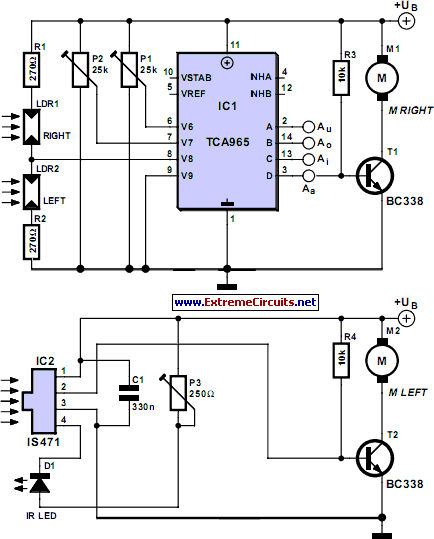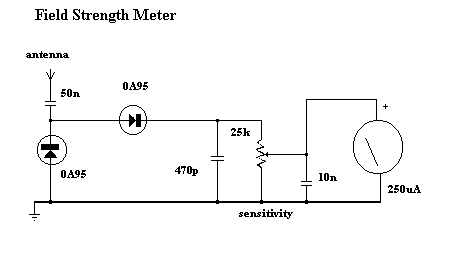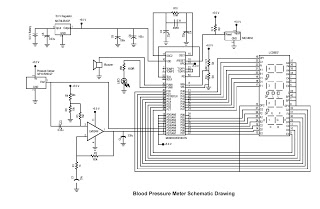
Lighthouse schematics

The schematic for this project has been revised, and a new printed circuit board (PCB) has been produced. Project files for the lighthouse project are available. The project is developed for the PIC12F683 microcontroller using SourceBoost Technologies' BoostC tool suite from Microchip.
The revised schematic incorporates several key components that enhance the functionality and reliability of the lighthouse project. Central to this design is the PIC12F683 microcontroller, which serves as the control unit. This microcontroller is well-suited for low-power applications and offers a range of I/O options, making it ideal for embedded systems.
The schematic includes various peripheral components that support the microcontroller's operation. For instance, a crystal oscillator may be integrated to provide accurate timing, which is crucial for the lighthouse's functionality. Additionally, decoupling capacitors are positioned near the power supply pins of the microcontroller to mitigate noise and ensure stable operation.
Input and output interfaces are also detailed in the schematic. The design likely includes light-emitting diodes (LEDs) to indicate the status of the lighthouse, as well as a relay or transistor circuit to control a larger load, such as a lamp or beacon. The inclusion of resistors for current limiting and pull-up configurations ensures proper operation of the LEDs and switches.
Power management is another critical aspect of the design. The schematic may feature a voltage regulator to provide a stable voltage supply to the microcontroller and other components, ensuring consistent performance even as battery levels fluctuate.
Overall, the combination of the PIC12F683 microcontroller, supporting components, and careful attention to power management and noise reduction creates a robust and efficient design for the lighthouse project. The use of SourceBoost Technologies' BoostC tool suite allows for streamlined programming and debugging, facilitating the development process and enhancing the project's overall effectiveness.I`ve revised the schematic for this project and had a proper PCB made, see the new version here. For anyone who is interested (Hi Richard) here are my project files for the lighthouse project. The project is written for the PIC12f683 using SourceBoost Technologies BoostC that I use as a tool suite in Microchip. 🔗 External reference
The revised schematic incorporates several key components that enhance the functionality and reliability of the lighthouse project. Central to this design is the PIC12F683 microcontroller, which serves as the control unit. This microcontroller is well-suited for low-power applications and offers a range of I/O options, making it ideal for embedded systems.
The schematic includes various peripheral components that support the microcontroller's operation. For instance, a crystal oscillator may be integrated to provide accurate timing, which is crucial for the lighthouse's functionality. Additionally, decoupling capacitors are positioned near the power supply pins of the microcontroller to mitigate noise and ensure stable operation.
Input and output interfaces are also detailed in the schematic. The design likely includes light-emitting diodes (LEDs) to indicate the status of the lighthouse, as well as a relay or transistor circuit to control a larger load, such as a lamp or beacon. The inclusion of resistors for current limiting and pull-up configurations ensures proper operation of the LEDs and switches.
Power management is another critical aspect of the design. The schematic may feature a voltage regulator to provide a stable voltage supply to the microcontroller and other components, ensuring consistent performance even as battery levels fluctuate.
Overall, the combination of the PIC12F683 microcontroller, supporting components, and careful attention to power management and noise reduction creates a robust and efficient design for the lighthouse project. The use of SourceBoost Technologies' BoostC tool suite allows for streamlined programming and debugging, facilitating the development process and enhancing the project's overall effectiveness.I`ve revised the schematic for this project and had a proper PCB made, see the new version here. For anyone who is interested (Hi Richard) here are my project files for the lighthouse project. The project is written for the PIC12f683 using SourceBoost Technologies BoostC that I use as a tool suite in Microchip. 🔗 External reference





